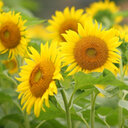Qualitative and quantitative analysis of multiple components for quality control of Deng-Zhan-Sheng-Mai capsules by ultra high performance liquid chromatography tandem mass spectrometry method coupled with chemometrics.
Raktažodžiai
Santrauka
Deng-Zhan-Sheng-Mai capsules are a well-known traditional Chinese patent medicine that was developed in China for the treatment of ischemic stroke. Its quality control focuses on Erigerontis Herba but ignores the contributions of Ginseng Radix et Rhizoma, Schisandrae Chinensis Fructus, and Ophiopogonis Radix. To improve the quality standards for this medicine, this work reports the application of a systematic ultra high performance liquid chromatography tandem mass spectrometric method coupled with chemometrics. Three qualitative and quantitative parameters are established for the evaluation of quality: chemical profiling, the relationship between the contents of 18 compounds and the antioxidant activity, and chemometric analysis. A total of 55 compounds, including 20 phenolic acids, 10 flavonoids, 15 saponins, and 10 lignans, were identified. The method for the quantitative determination of the aforementioned 18 compounds was validated. The limit of quantification ranged from 0.13 to 9.60 ng/mL. The overall recoveries ranged from 95.31 to 103.54%. Hierarchical cluster analysis and principal component analysis were applied to the data of 18 components in ten batches of samples. Nine compounds, including scutellarin, 3,5-O-dicaffeoylquinic acid, 4,5-O-dicaffeoylquinic acid, ginsenoside Rb1, ginsenoside Re, ginsenoside Rg1, ophiopogonin D, schisandrin, and schisandrol B, are suggested as chemical markers for evaluating the quality.


